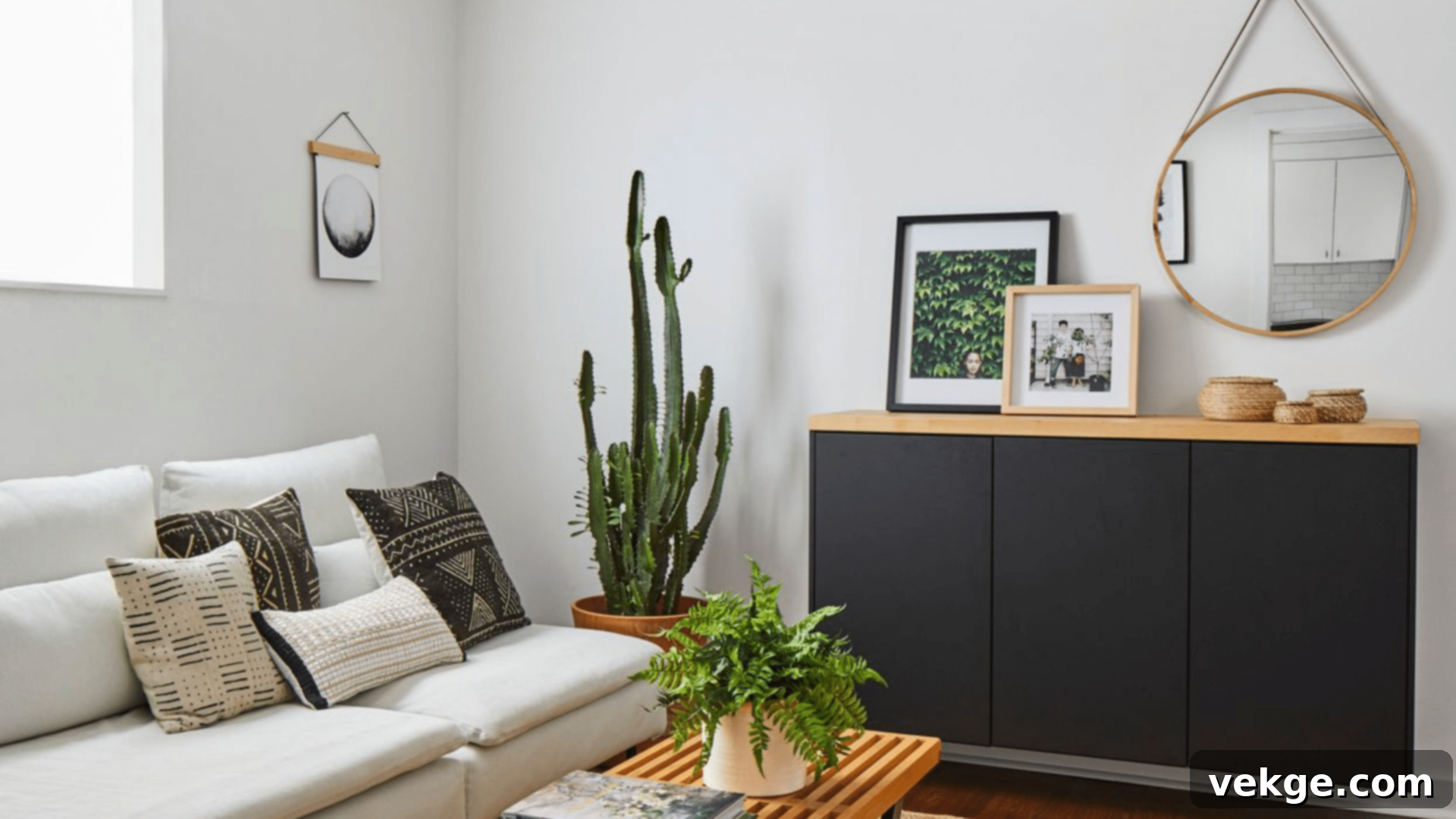Transform Your Tiny Home: The Ultimate Guide to Paint Colors for Small Spaces
The allure of tiny homes and compact living has captivated countless home decor enthusiasts, shifting the focus towards minimalistic lifestyles and efficient use of space. People are increasingly drawn to the philosophy of living with less, embracing the charm and practicality of smaller footprints. While the concept of a tiny home naturally implies a limited living area, it also offers a wealth of benefits, including hassle-free relocation, quicker cleaning routines, and the inherent encouragement to avoid clutter. These advantages resonate deeply with those seeking simplicity and freedom in their living environments.
However, the challenge arises when space is a premium. Harmonizing various design elements to create a cohesive, beautiful, and functional interior can be daunting. Among the many decisions one must make, selecting the right paint color stands out as one of the most crucial. The appropriate paint choice can dramatically alter the perception of a room, especially in small spaces where every decorative element plays a significant role. With limited square footage, there’s less room for elaborate furnishings, making paint an incredibly powerful tool for transformation. This article will delve into how strategic paint choices can not only elevate the appearance of your small spaces but also make them feel more expansive, inviting, and truly reflect your personal style.
The Psychology of Color: How Each Shade Transforms Your Compact Interior
Paint is arguably the most impactful and cost-effective way to influence the atmosphere and visual dynamics of your home interiors. While furniture and decor can add character, paint provides the fundamental backdrop that defines the mood and scale of a room. Different colors possess unique psychological effects that can be cleverly harnessed in small spaces.
For instance, light and bright colors are renowned for their ability to reflect light, making a space feel more open, airy, and significantly larger. They draw less attention to themselves, allowing the eye to travel freely and perceive fewer boundaries. Conversely, dark colors, often counter-intuitively, can also be highly effective in small rooms. Instead of making a space feel smaller, they can create an illusion of depth and sophistication, making walls appear to recede and fostering a cozy, intimate atmosphere. When applied strategically, dark hues can blur the edges of a room, creating a seamless, almost infinite feel rather than a confined one.
Beyond light and dark, warm colors (reds, oranges, yellows) tend to advance, making a space feel more personal and inviting, while cool colors (blues, greens, purples) tend to recede, promoting a sense of calm and openness. The key to successfully uplifting a small space lies in understanding and playing with these paint color characteristics. By making informed choices, you can creatively curate an environment that transforms the energy and perceived size of your compact living area. Below, we’ve carefully selected a range of color options, from light and airy to deep and moody, each with the potential to beautifully enhance your small space.
Top Paint Color Recommendations for Small Spaces
A diverse palette of color options exists that can magnificently complement small spaces, turning them into captivating and functional areas. The right color can evoke a desired mood, from serene and nature-inspired themes, similar to the popular Evergreen Fog, to vibrant and energizing aesthetics, all while aligning perfectly with a minimalist design ethos. In the following section, we explore various expert-recommended color suggestions designed to enhance the beauty and perceived spaciousness of your compact rooms.
1. Benjamin Moore’s Lead Gray

Benjamin Moore’s Lead Gray is an intriguing choice that masterfully works within a small space despite being a darker hue. This sophisticated gray, with its subtle blue undertones, offers a sense of refined elegance and depth. Instead of shrinking the room, Lead Gray has the remarkable ability to create an inviting, enveloping ambiance, making compact spaces feel surprisingly warmer and more substantial. It grounds the room, providing a solid foundation that allows lighter decorative elements to truly pop. This color is perfect for creating a cozy reading nook, a luxurious small bedroom, or even a chic powder room, providing a rich, textured backdrop that feels both modern and timeless.
2. Sage Green by Backdrop

Embrace the calming embrace of nature with Sage Green by Backdrop. This muted, earthy green has the power to fill any small space with an immersive and refreshingly moody environment. Sage Green evokes the tranquility of the outdoors, making your room feel surrounded by a serene, natural landscape. It’s a color that beautifully embodies a tasteful, understated style, perfectly balancing warm and vibrant elements without overwhelming the senses. Ideal for small living rooms, bedrooms, or even a home office, this shade promotes relaxation and focus, while its soft presence ensures the space feels open and breathable. Pair it with natural wood tones and crisp whites for an effortlessly elegant and organic feel.
3. Kendall Charcoal by Benjamin Moore
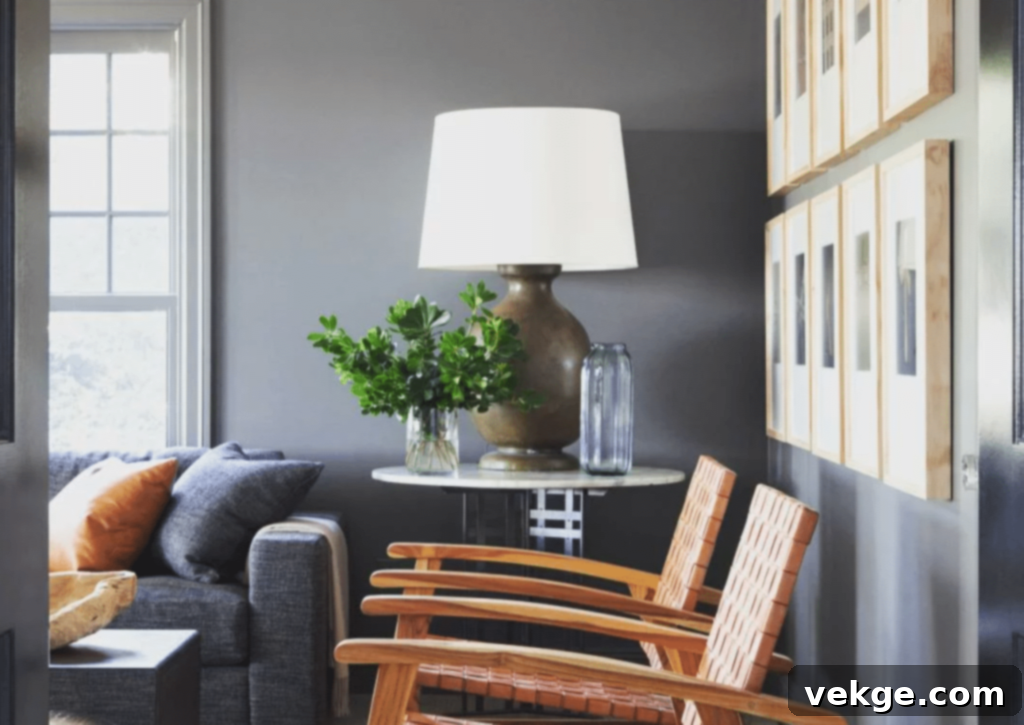
Kendall Charcoal by Benjamin Moore is a truly fascinating color, exceptionally skilled at visually simplifying and refining a small space. This dark, dramatic gray boasts rich green and brown undertones, providing a luxurious depth that transcends a simple monochrome. It gives your compact room a clean, sleek, and incredibly sophisticated appearance, acting as a powerful neutral that anchors the entire design. Rather than feeling oppressive, Kendall Charcoal creates a defined, stylish envelope that minimizes visual clutter and allows carefully chosen furniture and artwork to become focal points. It perfectly sets a minimal and clutter-free theme, making it an excellent choice for a contemporary small living area, a striking entryway, or a cozy, intimate dining nook.
4. Sherwin-Williams’ Meander Blue
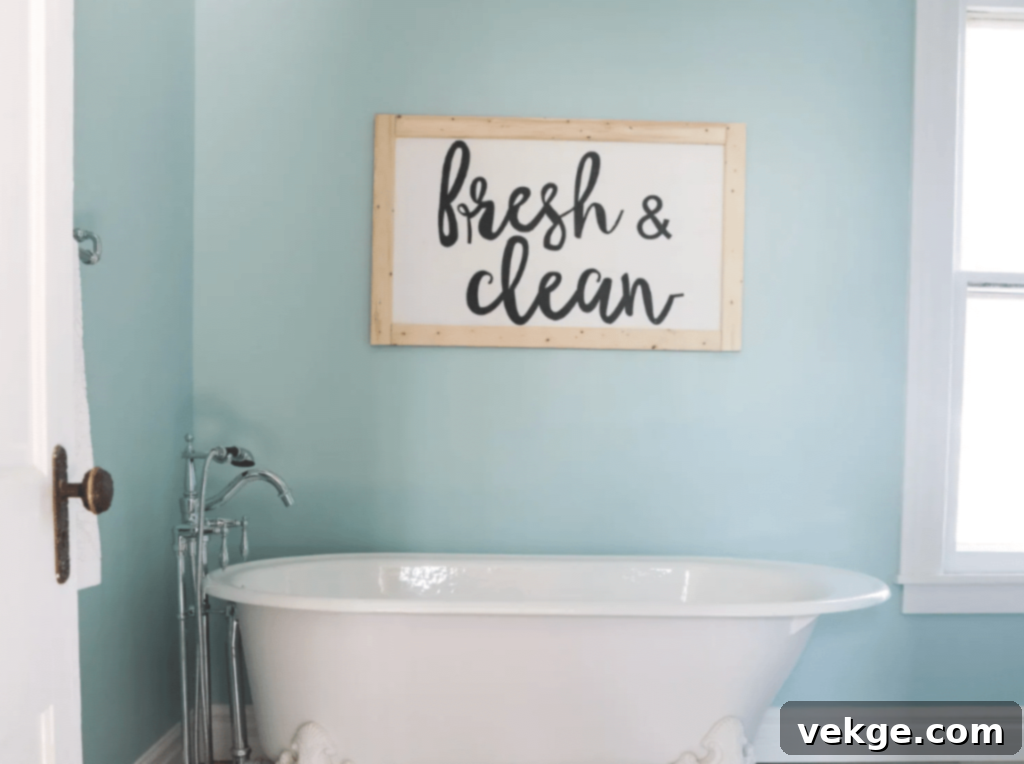
For those seeking to infuse a small space with excitement and a touch of joyful energy, Sherwin-Williams’ Meander Blue is an impeccable choice. This vibrant yet soothing aqua-toned blue creates a captivating illusion of spaciousness, reminiscent of clear ocean waters. Its refreshing and airy quality expands the visual boundaries of a room, making it feel larger and more open than its actual dimensions. Meander Blue adds an undeniable charm and character to any area, perfectly enhancing its visual appeal. It’s an ideal color for a bright small bathroom, a playful children’s room, or even a coastal-inspired kitchen, bringing a sense of lightness and a cheerful disposition that can truly uplift the spirit of your home.
5. Sherwin-Williams’ Spare White
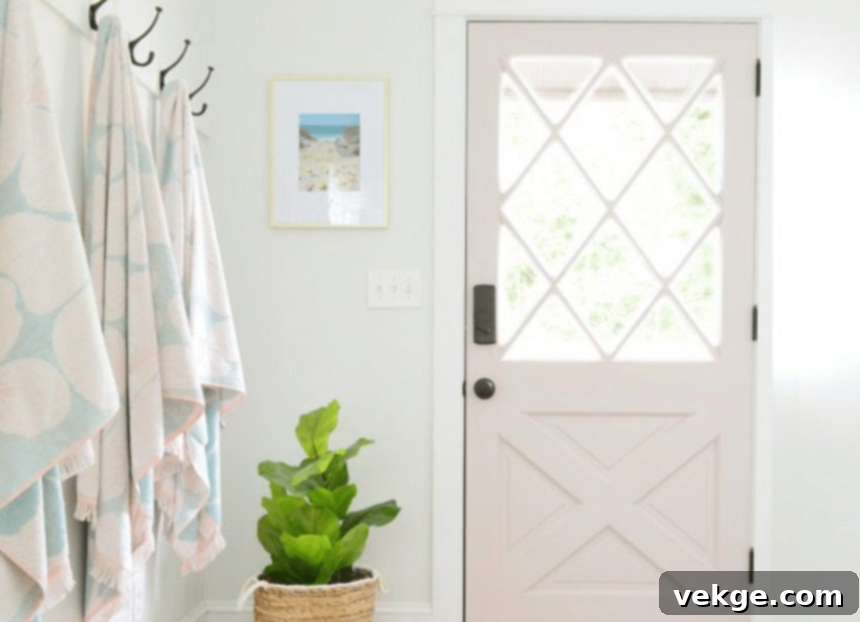
Often recommended by interior design experts for its subtle sophistication, Sherwin-Williams’ Spare White is far from a plain white. This nuanced shade provides the perfect balance of true white with just the right amount of delicate blue-gray undertones. It offers a crisp, clean canvas that feels fresh and expansive without being stark or cold. Spare White excels at making a small space feel significantly larger by reflecting light beautifully and creating an open, airy atmosphere. Crucially, this versatile color allows your home accents, artwork, and furniture to stand out prominently, enhancing the beauty of your decor without causing any visual disturbance or competition. It creates a seamless backdrop that integrates effortlessly with any design style, from modern minimalist to classic traditional.
6. Benjamin Moore’s White Dove
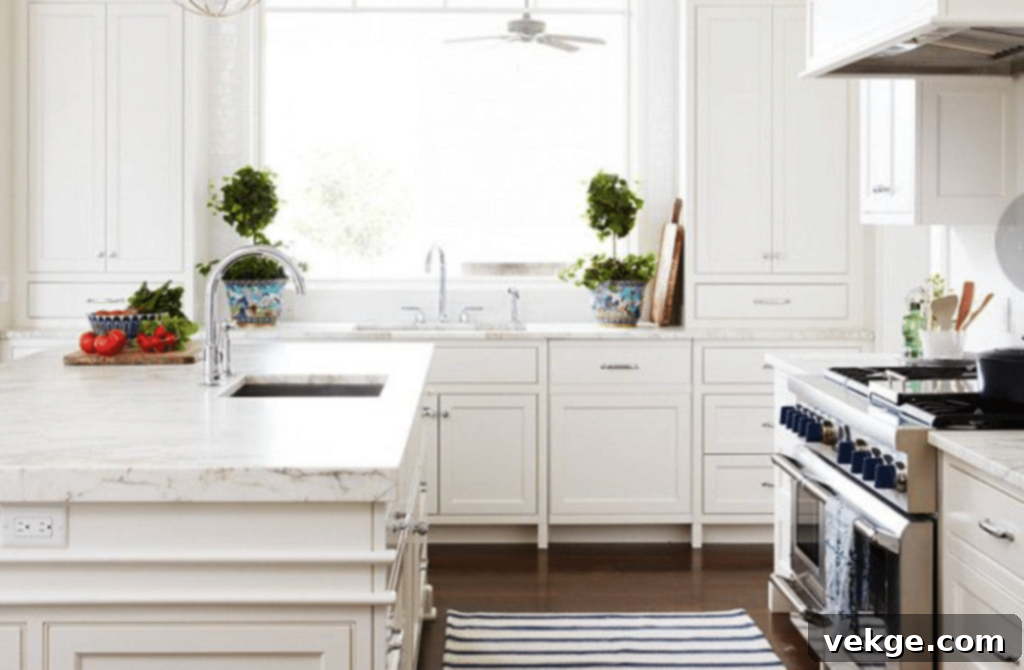
When it comes to compact spaces, Benjamin Moore’s White Dove is an absolute classic and a go-to choice for designers. What sets White Dove apart from countless other white shades is its beautiful creaminess without exhibiting strong yellow or blue undertones that can sometimes make a room feel too stark or too warm. Instead, it offers a soft, luminous quality that allows the ambiance of a small space to look consistently fresh, bright, and wonderfully airy. Its gentle warmth ensures the room feels inviting and comfortable, not sterile. White Dove is incredibly versatile and can suit virtually any space or room, from living areas to bedrooms, bathrooms, and kitchens, simply by its elegant and understated presence. It’s the perfect backdrop for layering textures and colors through your furnishings and accessories.
7. Symphony Blue by Benjamin Moore
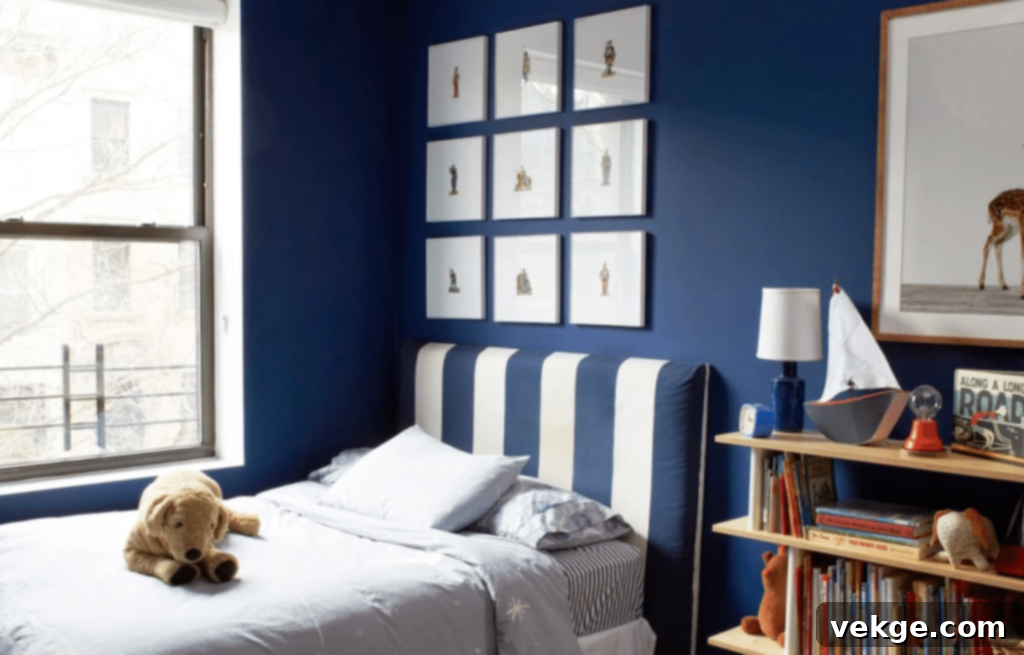
For a truly dramatic and effective transformation in a small space, consider a highly saturated blue paint like Benjamin Moore’s Symphony Blue, especially when applied in a matte finish. This deep, rich blue creates a remarkable illusion that your walls are receding, making the room appear significantly larger and more expansive. The matte quality of the paint absorbs light rather than reflecting it, lending the room a luxurious, velvety feel that exudes sophistication. Symphony Blue elevates the interior by giving it a gorgeous style, a minimal yet impactful theme, and an incredibly eye-catching appearance. It’s perfect for creating a statement in a small dining room, a cozy den, or a guest bathroom, adding depth and an air of opulence without overwhelming the limited dimensions.
8. Brinjal by Farrow & Ball
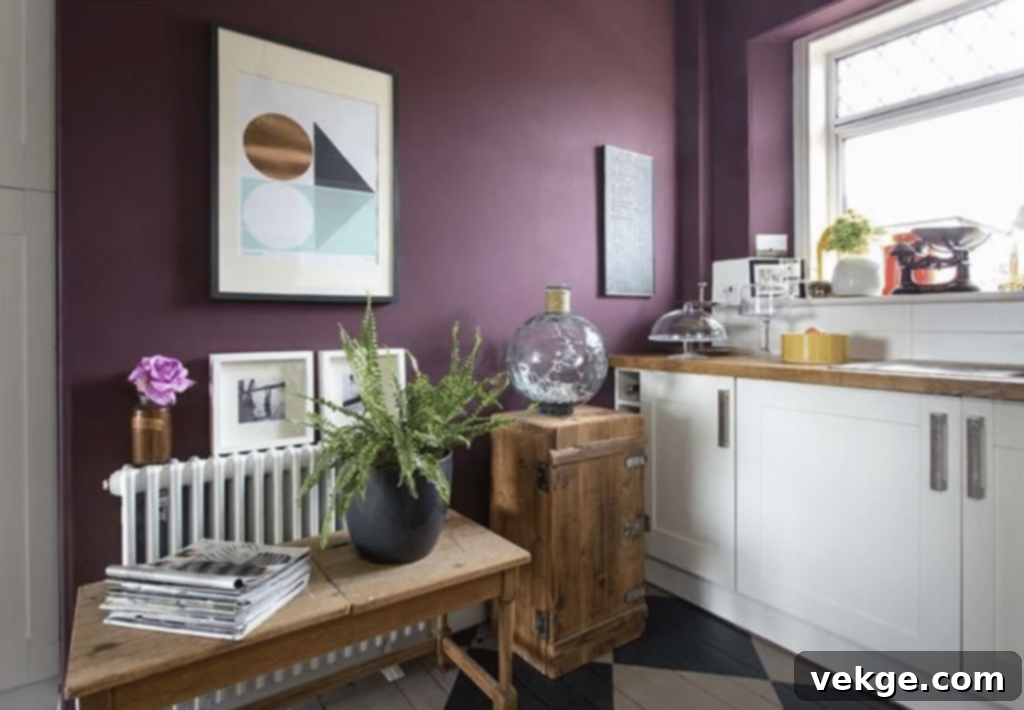
For those who dare to embrace the dramatic, Brinjal by Farrow & Ball is an ideal choice – a rich, deep aubergine that offers a moody yet incredibly stylish presence without feeling overly heavy. This sophisticated, dark purple shade can create the perfect ambiance, exuding warmth and vibrancy while maintaining a refined elegance. Brinjal beautifully blurs the boundaries of a small room, drawing the eye inwards and creating an intimate, jewel-box effect. This color also allows your decorative pieces to gorgeously accent the space, providing a sumptuous backdrop that perfectly complements the room’s theme. Whether used in a small living room for a dramatic statement, a luxurious bedroom, or even a chic powder room, Brinjal proves that dark colors can indeed make a small space feel utterly grand.
9. Red Earth by Farrow & Ball
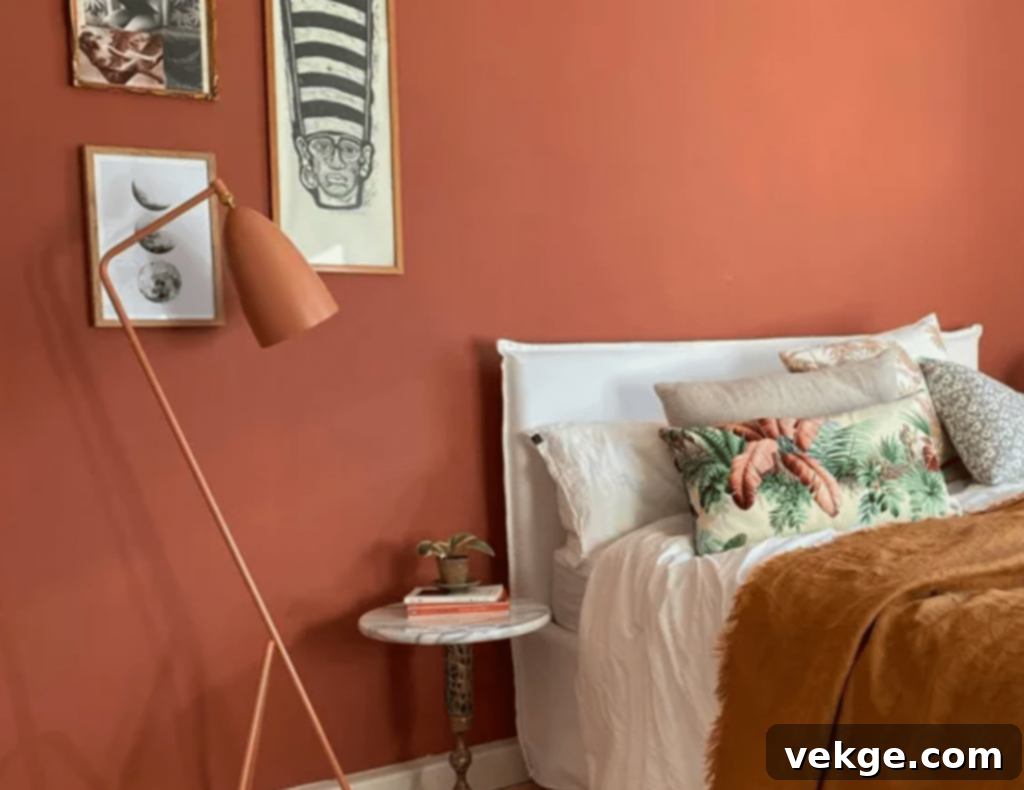
Farrow & Ball’s Red Earth is a unique and captivating color, lightly infused with a terra-cotta red that imbues it with the remarkable capability to make any space feel warm, inviting, and deeply connected to an earthy, natural aesthetic. This flawless combination of red and yellow tones allows Red Earth to radiate a vibrant and energetic appearance during daylight hours, filling the room with a cheerful glow. As the sun sets, the color transforms, radiating a cozy, calming, and wonderfully intimate feeling that is perfect for unwinding. It’s an excellent choice for a small dining area, a welcoming entryway, or even a sunroom, bringing the warmth of the natural world indoors and making your compact space feel grounded, comforting, and full of character.
Essential Tips and Tricks While Painting Small Spaces
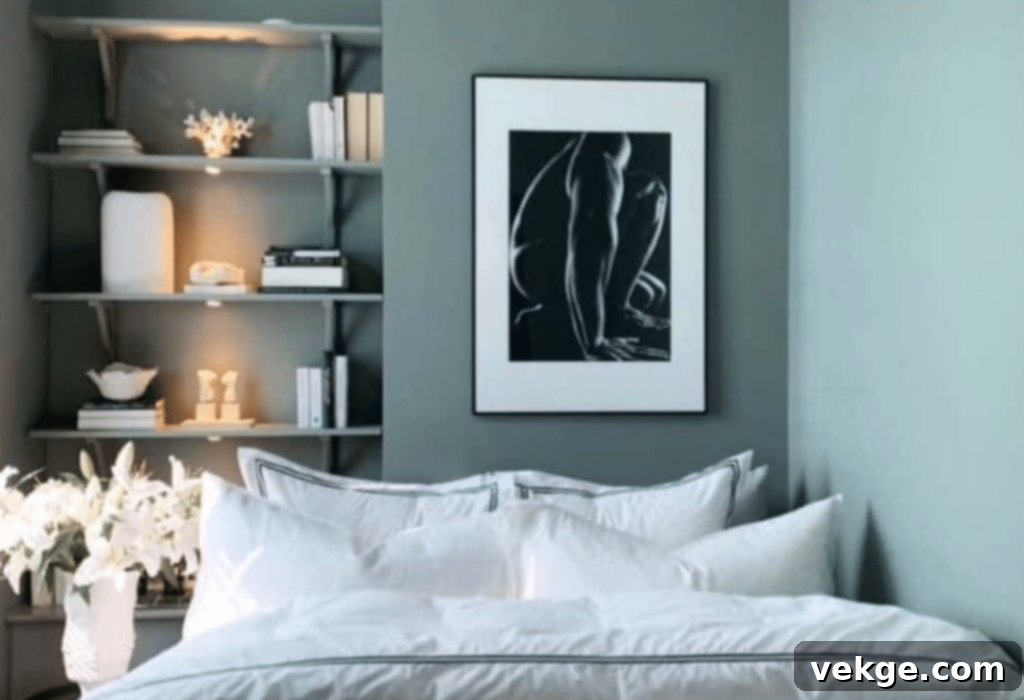
While the choice of color is undoubtedly key to improving the visual appeal of a small space and turning its limited area into an adorable sight, the way you apply those colors is equally crucial. With just a few strategic painting tricks, you can unlock the full potential of your compact rooms, whether it’s a small living room, kitchen, or bathroom. Below, we’ve listed some expert tips to help you maximize your small space with paint.
- Painting Your Space in a Single Shade: One of the most effective ways to make a small room feel larger is to paint all walls, trim, and even built-in shelves in a single, continuous color. When each wall and all woodwork are covered in one cohesive shade, it eliminates visual breaks and contrasts. This creates a seamless flow that allows the eye to travel unobstructed around the room, making it feel more expansive and fluid. This technique blurs the boundaries of the space, preventing any single element from “chopping up” the room visually.
- Choosing the Same Color for Walls and Ceiling: Another powerful illusion for adding height and openness to a small room is to paint the walls and the ceiling in the exact same color. This method stops the eye from noticing where the walls end and the ceiling begins, creating an uninterrupted visual flow that pushes the perceived height upwards. For this trick to work optimally, selecting a lighter color or a very subtle dark color that recedes is paramount. A crisp white, a soft off-white, or a light pastel can work wonders, creating an ethereal, boundless feeling.
- Using Contrasting Decor Options Strategically: While paint can make an area appear bigger, decorating it stylishly is equally important. To achieve a stunning look in a small space, strategically using contrasting decor items is a smart approach. Instead of a uniform palette, introduce pops of contrasting colors or textures through pillows, throws, artwork, or small furniture pieces. This adds visual interest and depth without overwhelming the space. The key is balance: let your wall color provide the expansive backdrop, while carefully selected contrasting decor draws the eye and defines zones, making the room feel thoughtfully designed rather than cramped.
- Employing a Monochromatic Scheme: Beyond a single shade, a monochromatic scheme involves using various shades, tints, and tones of the same color family throughout the room. This creates a cohesive and sophisticated look that adds depth and interest without introducing jarring contrasts that can make a small space feel busy. For example, pair a light blue wall with a slightly darker blue sofa and a very pale blue ceiling. This harmonious approach creates a serene, unified environment that subtly expands the perception of space.
- Strategic Use of Accent Walls: While generally advised against in small spaces, an accent wall can work if executed correctly. Choose the longest wall or a wall with architectural interest (like a fireplace) and paint it a slightly darker or bolder version of your main wall color. The key is that it complements, rather than clashes, with the surrounding walls, and it doesn’t create a stark divide. This can add depth and a focal point, drawing the eye to one area and adding character without making the room feel smaller.
- The Power of Vertical or Horizontal Stripes: Stripes can be a dynamic tool for manipulating perception. Vertical stripes can draw the eye upwards, making ceilings appear taller and rooms feel more elegant and grand. Horizontal stripes, particularly in lighter colors, can make a narrow room appear wider or a short wall seem longer, creating a sense of expansiveness. Ensure the stripes are not too bold or too numerous, opting for subtle contrasts or tone-on-tone variations to avoid overwhelming the space.
- Considering the Paint Finish: The sheen of your paint also plays a role. Matte finishes absorb light, giving a sophisticated, soft look that can make walls recede. However, they can be less durable. Eggshell or satin finishes offer a subtle sheen that reflects a bit more light and are easier to clean, making them practical for high-traffic small areas like kitchens or bathrooms. High-gloss finishes reflect a lot of light, which can create a glamorous, spacious feel, but they also highlight imperfections, so perfect wall prep is crucial.
- Optimizing Natural and Artificial Lighting: Even the perfect paint color can fall flat without proper lighting. Maximize natural light by keeping windows unobstructed. Supplement with layered artificial lighting: ambient light (ceiling fixtures), task lighting (lamps), and accent lighting (spotlights on artwork) can collectively brighten a small room and create a sense of depth and dimension. Light-colored walls will reflect this light, further enhancing the spacious feel.
- Declutter Before You Paint: While not a painting trick itself, decluttering is a crucial pre-painting step for small spaces. A freshly painted room will only truly shine if it’s not overwhelmed by excess belongings. Clear out items you don’t need, organize what remains, and ensure surfaces are clean and minimalist. This prepares the canvas for your new paint color to make its full impact, contributing significantly to an overall feeling of openness and tranquility.
- Always Test Your Colors: Before committing to a color, always purchase sample pots and paint large swatches on different walls in your room. Observe how the color looks throughout the day under varying light conditions (natural light, artificial light, morning, evening). Colors can look vastly different in your home than they do on a tiny paint chip, and this step is vital to avoid costly mistakes and ensure you love your chosen shade.
Final Thoughts on Elevating Small Spaces with Paint
In this comprehensive article, we’ve explored the myriad ways paint options can highlight and enhance your small spaces, demonstrating how such a basic element can profoundly impact interior design. The limitations of size should never be a reason for your home to lose its charm or functional elegance. Instead, they present a wonderful opportunity for creative solutions.
By understanding the psychology of color, selecting the right shades from our carefully curated list, and applying expert painting techniques, you can do wonders. Transform cramped areas into inviting havens, make narrow rooms feel expansive, and inject personality into every corner. Paint is more than just a coating; it’s a powerful design tool that, when wielded thoughtfully, can dramatically improve the comfort, aesthetics, and perceived size of any compact living area. We hope this post broadens your perspective on highlighting your house by exploring different painting ideas. Embrace these insights, experiment with confidence, and enhance your tiny areas in the most elegant and functional ways possible!
